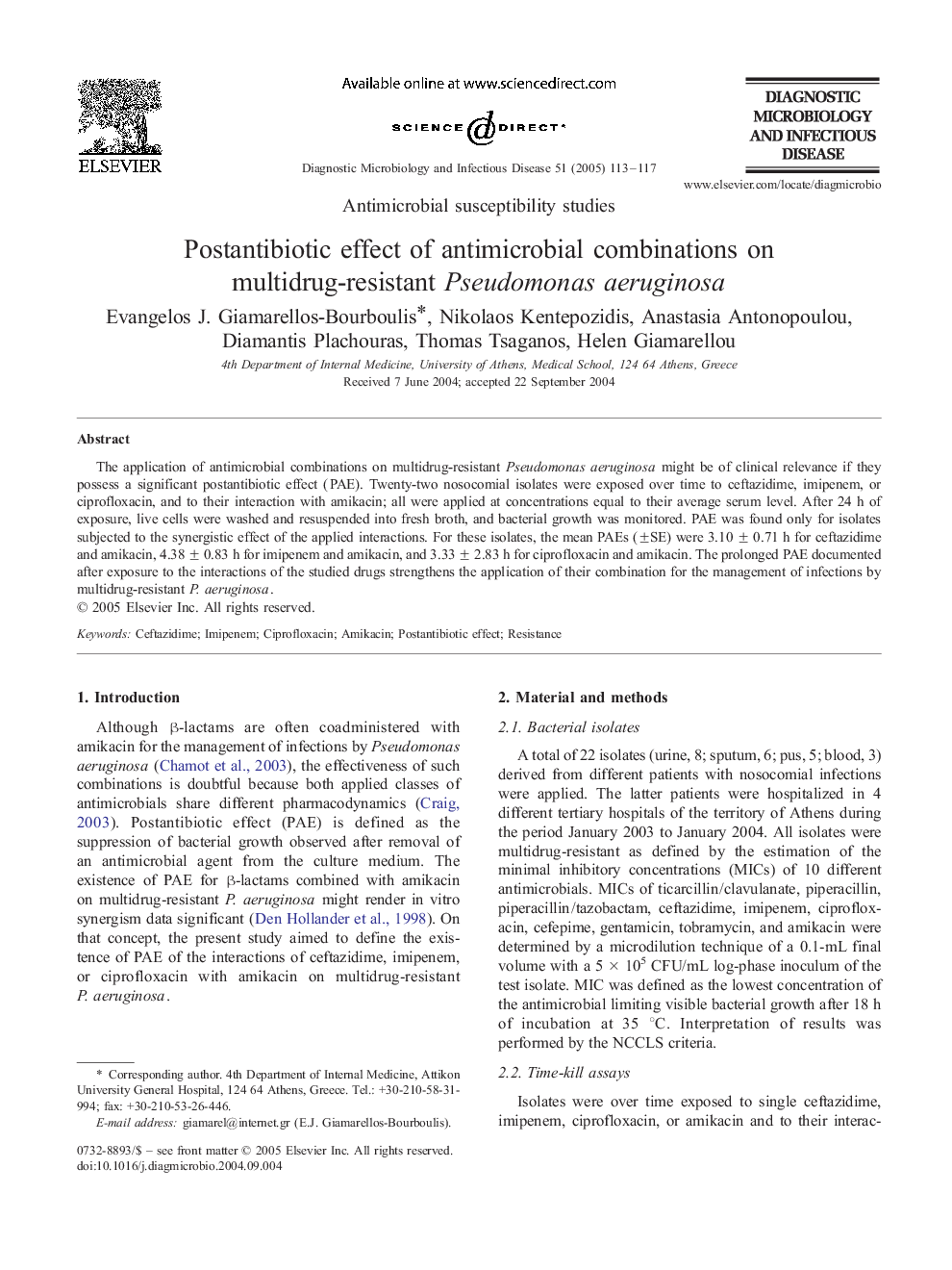| Article ID | Journal | Published Year | Pages | File Type |
|---|---|---|---|---|
| 9263337 | Diagnostic Microbiology and Infectious Disease | 2005 | 5 Pages |
Abstract
The application of antimicrobial combinations on multidrug-resistant Pseudomonas aeruginosa might be of clinical relevance if they possess a significant postantibiotic effect (PAE). Twenty-two nosocomial isolates were exposed over time to ceftazidime, imipenem, or ciprofloxacin, and to their interaction with amikacin; all were applied at concentrations equal to their average serum level. After 24 h of exposure, live cells were washed and resuspended into fresh broth, and bacterial growth was monitored. PAE was found only for isolates subjected to the synergistic effect of the applied interactions. For these isolates, the mean PAEs (±SE) were 3.10 ± 0.71 h for ceftazidime and amikacin, 4.38 ± 0.83 h for imipenem and amikacin, and 3.33 ± 2.83 h for ciprofloxacin and amikacin. The prolonged PAE documented after exposure to the interactions of the studied drugs strengthens the application of their combination for the management of infections by multidrug-resistant P. aeruginosa.
Related Topics
Life Sciences
Immunology and Microbiology
Applied Microbiology and Biotechnology
Authors
Evangelos J. Giamarellos-Bourboulis, Nikolaos Kentepozidis, Anastasia Antonopoulou, Diamantis Plachouras, Thomas Tsaganos, Helen Giamarellou,
